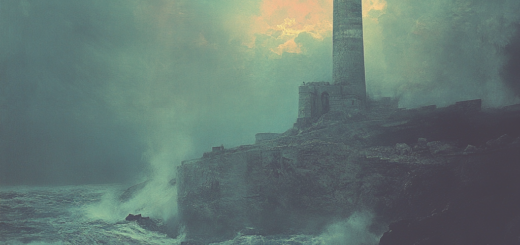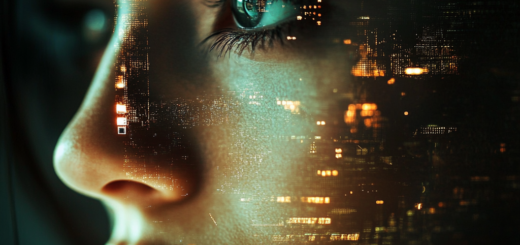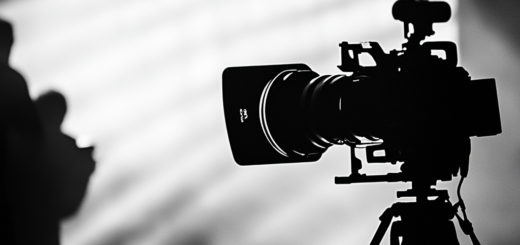Film, digital, immersive screening: the rebirth of cinema through exhibitions
From film to digital: how cinema has changed in recent decades
There have been several key moments in the history of cinema that have changed its perception and technological development. One of the most significant changes was the smooth and later rapid disappearance of film as the main medium for cinematographic works. For over 100 years, cinema has relied on film technology, which, despite its fragility and limitations, has remained the backbone of the film industry.
The film created a special atmosphere, which was not only in the image, but also in the shooting process. However, in recent decades, with the development of digital technologies, cinema has undergone drastic changes. Digitalization has brought new opportunities: enhanced editing capabilities, improved image sharpness, ease of material processing, and, of course, reduced costs for film production and distribution. This not only made life easier for the creators, but also made the movie accessible to a wider audience.
Digital technologies and their impact on traditional cinema
Digitalization has not only changed the technical side of cinema, but has also significantly affected its perception and presentation. With the advent of digital cameras and editing, it has become possible to create films with much less time and money. This accessibility led to the explosion of independent cinema, the expansion of the boundaries of genres and formats. One of the most striking examples of the digital revolution is the transition from film to digital projector systems in cinemas.
Today, thanks to digital projectors, any movie can be broadcast anywhere in the world. This allowed not only to keep the films in high quality, but also to save on production and transportation, as well as simplify the distribution of content. In addition, digital technologies have significantly improved post-production, providing opportunities for color correction, visual effects and animation. As a result, films began to look brighter, more contrasting and dynamic, and CGI (Computer Generated Imagery) technologies turned cinema into a truly exciting spectacle.
Immersive screenings: a new form of interaction with cinema
Immersive screenings are one of the most striking trends in modern cinema. This approach destroys the traditional notion of cinema as a static, passive process. With the help of the latest technologies such as virtual reality (VR) and augmented reality (AR), films are becoming not just an object for observation, but a space where the viewer can actively participate and even influence the plot.
Immersive screenings can take a variety of forms: from installations in which viewers literally find themselves inside a film, to multi-camera shootings where each viewer sees a unique picture. This not only changes the very essence of perception, but also creates new opportunities for filmmakers, allowing them to experiment with space and interaction with the audience.
Exhibitions of cinematography: when a film becomes an exhibit
Film exhibitions are an interesting phenomenon that has attracted the attention of both viewers and industry professionals. Such exhibitions are becoming more and more popular due to the rethinking of the role of cinema in the cultural sphere. Unlike classical screenings, at exhibitions the viewer has the opportunity not only to watch the film, but also to explore it from different points of view.
Film exhibitions can include elements of scenery, costumes, director’s notes, as well as various forms of video art and installations that are related to cinema. This approach gives the viewer the opportunity to better understand the process of making a film, feel its atmosphere and even become a part of the work. An example of this approach is the use of new technologies in exhibitions: 3D printers for creating models of scenes, multi-channel sound, virtual spaces, etc.
Cinema as a multifaceted art: the intersection of technology and tradition
Modern cinema is a synthesis of traditions and innovations. On the one hand, it continues to use traditional methods of shooting, editing and decoration. On the other hand, it is actively implementing new technologies such as digital effects, immersive displays and interactive elements. This synthesis helps to create unique shapes that evoke deep emotional experiences in the viewer.
Technologies and traditions are becoming partners rather than competitors, creating new horizons for cinema. Combining film and figures, classical photography and CGI allows you to create more flexible and diverse forms that can satisfy any tastes and needs of the viewer. It is at this intersection that new, unique projects are born, which become breakthroughs in art and show the future of cinema.
The future of cinema
The future of cinema will be determined not only by technological progress, but also by changing viewers’ attitudes towards art. There are new formats of interaction ahead of us that will make cinema even more exciting and interactive.
The main directions of the development of cinematography:
- Multi—channel exhibitions – viewers will be able to immerse themselves in cinematic worlds through a combination of films, installations and interactive spaces.
- Virtual and augmented reality are technologies that will transform the viewer into a full—fledged participant in the story.
- The synthesis of film, digital effects and immersive technologies will create unique visual and tactile sensations.
- It is important that technology complements rather than replaces traditional aspects of art, such as plot, emotion, and deep meaning. Cinema will continue to evolve using the achievements of modernity, but it will always be based on the ability to convey human experiences and ideas.
Questions and answers
Digitalization has made cinema accessible, allowing for improved image quality, lower costs of film production and distribution, and improved post-production capabilities.
Immersive screenings allow viewers not only to watch the film, but also to actively interact with it, often becoming part of the action using virtual or augmented reality technologies.
Film exhibitions provide an opportunity to explore films, their sets and creation processes more deeply, allowing the viewer to feel like a part of the creative process.
Combining film and numbers helps to create more flexible forms in which technology complements traditional shooting methods, opening up new possibilities for cinema.
Immersive formats create new types of interaction, allowing viewers to become not just observers, but also active participants in events, which turns cinema into a more interactive and multi-layered experience.



